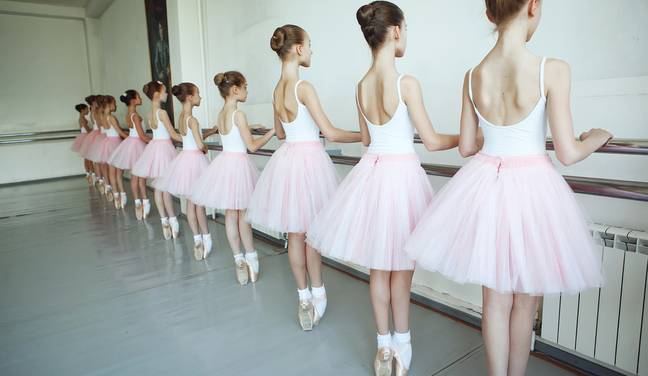Terminology; the correct, the incorrect, and the made up entirely
Classroom terminology, the right, the wrong, and the made up entirely. The verbal cues we give to our students can help or hurt them in the long-run of their training and beyond. How do we ensure that our vocal cues match our physical cues, and that it’s all as accurate as possible?
There are a few common terms that get interchanged frequently in classrooms that should not be interchangeable. My personal favorites being the difference between relevé and elevé, and grande jete versus saut de chat. Let’s discuss! A relevé (or as a verb, relever – to raise), comes from plié, thus enabling jumps to happen as the progression, whereas elevé rises from straight legs and would not be a place to progress a jump from. Why does this matter? Simply put, to be technically correct. I strongly believe in offering our students information that’s as correct as possible, to ensure that dancers are being given functional ideas – does this work in a progression to my next action? And if the answer is no, how do I then reassess what the ask is so that it will be effective.
There are some steps that have many names, perhaps depending on location, who your teacher is, etc. The debate on their correctness could be boiled down to an accurate description given in Ballet terms. What I grew up knowing as an “air barrel” someone else grew up calling a “calypso”, and what I grew up referring to as a “calypso” goes by “double stag jump” to many. Who is right? All of us, because it’s what we were taught, and also none of us to an extent. Any of these jumps could come from a few different preparations, so it leaves us with the notion that offering the most correct version, whatever the base actions are, to our students is imperative for safety and function. This ensures that the technical asks of them is done in verbiage that is accurate.




You left out the biggest, passe and retire. I always tell my students what both mean and that they’ll probably hear it both ways, depending on where they go. For instance, in Europe, most teachers say battement jete, but in America it’s degage. Same goes for grand jete en tournant – in the States it’s just a tour jete. Could also be called jete entrelace..
Also the loose use of the command to “put your arms in third.” Well, a Cecchetti third is different from Vaganova, but most dancers know that teachers mean the Cecchetti 3rd. So I teach all the arabesque positions in both Vaganova and Cecchetti styles, as it’s important to know all. Same goes for body positions.
But in the end, aren’t we all doing our best? We’re just teaching what we know, something that was told to my directors at Tulsa Ballet long ago, when they were insecure about starting a new school and company. Someone they admired told them to do just that, teach what you know, and so they did.
Thanks for your feedback. I didn’t forget other terms, in order to be comprehensive here we’d need a book, not a blog. Teaching what you know is wonderful, as long as the information you have is correct… if someone is teaching what they know, but they’ve been given ‘wrong’ information, then that doesn’t really serve the dancers they are training.